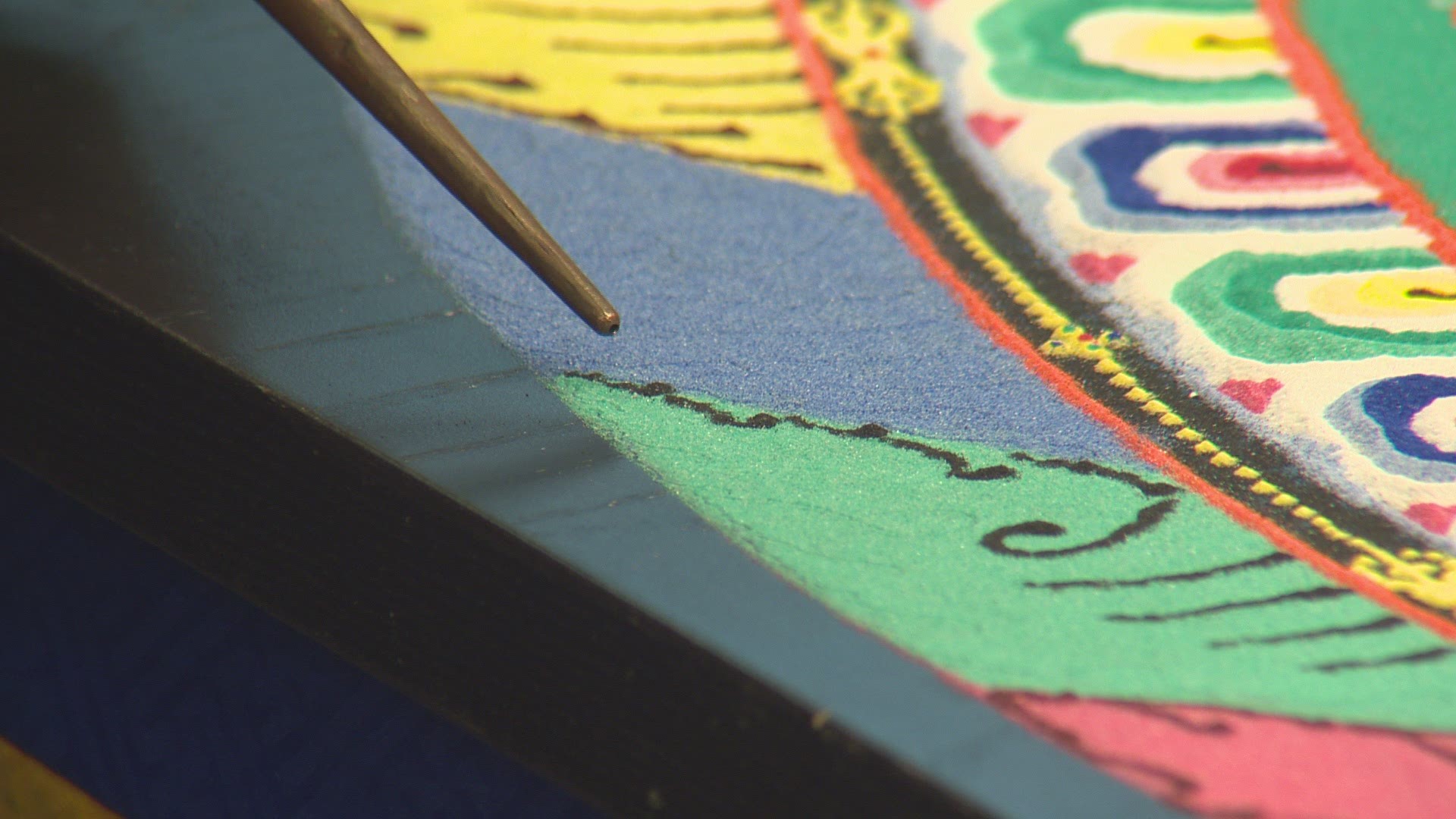VANCOUVER, Wash. — Tibetan Buddhist Monks spent five days creating a colorful design inside Clark College's Cannell Library in Vancouver this week. Then after it was finished, they destroyed it.
Amy Lee is the director of the Dharma Light Tibetan Buddhist Association, the sponsor of this week's art display. She said the message of the sand mandala is meant to convey that everything, at some point, comes to an end.
"Nothing belongs to you. Everything is impermanent. It's gone. Even our life, we can not hold forever," Lee said.
According to the college, the practice is one of the oldest traditions of Tibetan Buddhism.
In the culture, everyone and everything surrounding the mandala is blessed, and everyone who views the mandala will experience a feeling of profound peace and joy.
The construction starts with an opening ceremony that includes chanting, music and mantra recitation.
Then the monks draw the outline for the mandala, measuring each section precisely. This part of the process takes about three hours to complete.
Then, over the course of several days, millions of grains of colored sand are funneled into just the right spot.
The monks use a tool called a Chakpur to grate the sand into a fine stream.
And just as the design is complete, it's destroyed.
In the closing ceremony, the monks sweep up the colored sand to symbolize the impermanence of everything.
The sand from the Clark College mandala was then taken down to the Columbia River where a small portion of it was poured into the water to bless the marine life.

